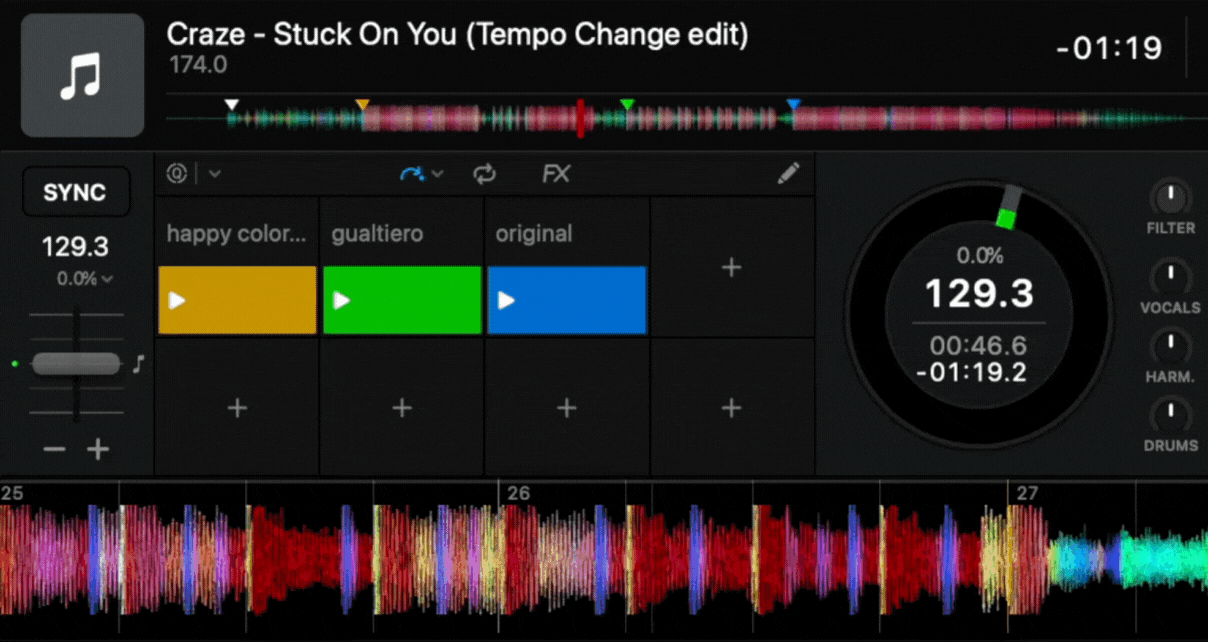“Real DJs don’t use beatgrids” blah blah blah. Well, you should! We’ve picked five BIG reasons to share with you, so check out the lesson replay above for the reveal.
About this lesson
This is a recording of one of our free Thursday Q&A Live DJ lessons – “the show where DJs get answers to things they didn’t know they didn’t know”.
In this lesson, we also discussed how to “pre-read” a crowd, mixing with stems, what DJing is actually about, and much more – timings below. To learn more about how our DJ courses can help you become a better DJ or DJ/producer, check out our courses page.
Here’s what’s covered…
- 0:00 Intro
- 1:14 Why bother with beatgrids?
- 3:40 Creates perfect loops
- 4:46 Effects rely on it
- 5:14 Smooths out tempo changes
- 6:15 Makes sync work correctly
- 8:43 Easier to mix older tracks
- 10:32 What DJing is actually about
- 14:33 With a pro club set-up, is it worth paying for Rekordbox Professional?
- 17:22 When mixing with stems, does everything need to be in key?
- 22:36 What improvements would you like to see in Algoriddim’s djay Pro software?
- 32:08 What makes a DJ “average”?
- 34:17 How can DJs “pre-read” a crowd?
- 36:04 Should I upgrade Platinum Notes 4 to the newest version?
- 38:39 What’s the best software for DJing with an iPad?
- 43:15 What’s up with your record collection?
- 44:41 Thoughts on using VirtualDJ software?
- 47:53 Why don’t stems work with Tidal streaming?
So why bother using beatgrids?
As came out loud and clear in today’s show, it all comes down to how you want to DJ.
There’s absolutely nothing wrong with DJing the old way, using music files as if you were DJing with real records. I know DJs who won’t even use the cue features of modern software because they’re used to using the jogwheels to hold the music still and then release it by letting go with a small push. That’s all absolutely fine.
But if you embrace the modern way of DJing – using cues, loops, key matching, multiple decks, stems, and all the other features that we’ve come to love – beatgrids take one of the big steps to making blends sound great, out of the equation. This allows you to concentrate on all these other things. That’s the real win of beatgrids: They make effects and sync and modern DJ techniques much easier and, more importantly, they make your results sound a lot better without you having to put as much raw technical effort into the performance.

Now, if technical effort is what you think DJing’s about, this isn’t going to appeal to you. Again, that’s absolutely fine. If you think DJing is about ideas and about what comes out of the speakers, and you want as much help as possible with the execution, then alongside things like waveforms, automatic key matching, song recommendation features, and so many other things we could name, beatgridding is right up there as something that makes DJing nowadays so exciting.
Learn to DJ with us: The Complete DJ Course
The big hang-up for people sold on this idea, though, has always been that these things take time to get right, and the reason for today’s show was that Algoriddim has kind of fixed that with its djay Pro 5 software. It has beatgrids which are incredible, unlike anything we’ve ever seen – they just make this whole idea work. So if you have been thinking about experimenting with modern ways of DJing, but don’t like the idea of spending a lot of time getting these things right, you should consider taking a look at that piece of software.
You can still comment about this lesson right here on the website or underneath the video on YouTube. We’d love to hear your thoughts.



![Best Beginner DJ Gear, Mac VS Windows, Fixing Beatgrids [Live Q&A] Best Beginner DJ Gear, Mac VS Windows, Fixing Beatgrids [Live Q&A]](https://cdn.digitaldjtips.com/app/uploads/2024/09/19183008/19-sept-blank-WEBSITE-150x150.jpg)
![Gain Levels, Rekordbox 7 Updates, DJ Gear Tips [Live Q&A] Gain Levels, Rekordbox 7 Updates, DJ Gear Tips [Live Q&A]](https://cdn.digitaldjtips.com/app/uploads/2024/05/16203445/16may-WEBSITE-150x150.jpg)

![Switching From Vinyl To Digital DJing, Party Speakers & More [Live Q&A] Switching From Vinyl To Digital DJing, Party Speakers & More [Live Q&A]](https://cdn.digitaldjtips.com/app/uploads/2024/09/05200154/5-sept-blank-WEBSITE-150x150.jpg)